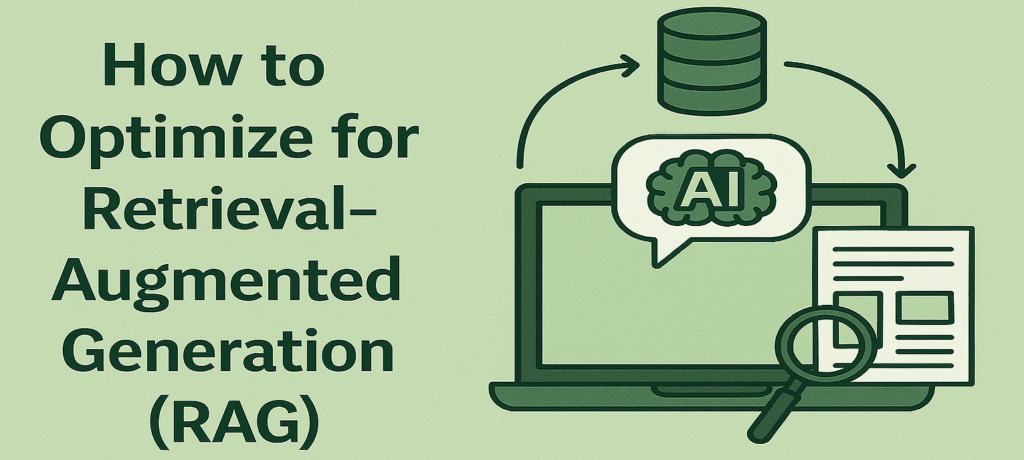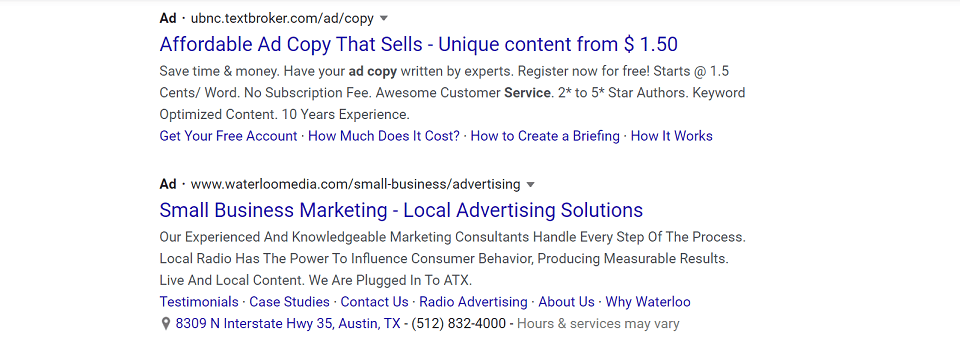AI search has changed the rules.
Instead of pulling answers from a single search index like Google, newer tools use Retrieval-Augmented Generation (RAG).
These models combine a retriever (which looks up relevant documents) with a generator (which uses those documents to produce a natural-sounding response).
If your content isn’t retrieved, it won’t be seen.
This shift mirrors the rises of Answer Engine Optimization (AEO), a strategy that aligns your content with how search AI models evaluate trust, structure, and clarity, and Generative Engine Optimization which helps surface content on AI platforms.
In this post, you’ll learn what RAG is, how it works, and how to make your content part of the answer.
What Is Retrieval-Augmented Generation?
Retrieval-Augmented Generation combines two AI tasks:
- A retriever that pulls chunks of relevant content from a knowledge base or index
- A generator that uses those chunks to produce a contextual response to a user’s query
This means models like ChatGPT or Claude don’t always rely only on pre-trained data.
If the system is connected to external content (like websites, APIs, or custom documents), it can fetch real-time information to generate more accurate and up-to-date answers.
If your content appears in the retriever’s index, you have a shot at being part of the output.
If it doesn’t, you’re invisible.
Why RAG Optimization Is the New Visibility Battle
RAG is already at the core of many high-usage tools:
- Google AI Overviews
- Perplexity live search with citations
- ChatGPT’s Retrieval Plugin and Custom GPTs
- Claude’s document-prompting workflows
All of these systems rely on documents that are structured and semantically rich.
RAG determines what gets retrieved, while the language model determines how the response is worded.
If you want to show up in AI answers, you must earn retrieval first.
That’s the new top of funnel.
How AI Chooses What to Retrieve
To appear in RAG-driven results, your content must align with several ranking signals used by retrievers.
1. Semantic Relevance (Not Keywords Alone)
Retrievers use vector embeddings to match meaning, not just surface keywords.
If your webpage talks around a topic but never directly answers a question, you’re less likely to be pulled.
What to do:
Write clearly. Make your point as obvious to find as possible.
Phrase things the way your audience would ask.
Use subheadings and summaries that highlight intent.
2. “Chunk” Quality and Structure
Most systems break content into “chunks” (200–500 words each).
These chunks are what the tools actually score and retrieve.
What to do:
Make every section self-contained.
Use headings, short paragraphs, and digestible layouts.
Keep your most valuable insights near the top of each chunk.
3. Metadata and Schema Markup
Retrievers don’t always see the full page. They often scan only the meta titles, schema tags, and summaries.
What to do:
Use structured data like FAQ, HowTo, Article, and WebPage wherever it makes sense.
Structure your website properly for AI. Embed the most important context in meta titles and headers.
4. Authority and Trust
RAG systems (especially in tools like Perplexity or Google AI Mode) weigh credibility.
These tools are more likely to retrieve content from brands with strong reputations.
What to do:
Build trust signals. That includes
- Strong About pages
- Author bios (and list author names on blog posts and other content items)
- External citations
- Consistent ORM (Online Reputation Management)
5. Answerability
Content that directly answers a question is easier for AI to use.
What to do:
Front-load answers.
Follow up with supporting context.
Use FAQs and TL;DRs where appropriate.
How to Structure Content for RAG Retrieval
In order to optimize your content for retrieval, you’ll have to start with changing your approach to content format.
Even the best content won’t grab LLM attention if it’s buried inside a dense wall of text.
Here’s how to structure for success:
- Start with the answer: The first paragraph should answer the implied question directly.
- Use subheadings that reflect questions: Make it easy for AI to map chunks to user intent.
- Include context—but make it scannable: Support your claims with examples or data.
- Wrap with summary bullets: This helps reinforce semantic relevance.
- Include structured markup: Schema helps machines “see” your intent.
This structure aligns well with AEO and content built for answer engines. Why?
Because the goals are the same.
Technical Tips for RAG Indexing
If AI systems can’t crawl or index your content, it won’t matter how good it is.
Here’s how to stay accessible:
1. Implement llms.txt
Think of this as robots.txt, but for LLMs.
It’s an emerging standard that tells AI crawlers which URLs they should prioritize.
This file is NOT the same as robots.txt.
It provides direction and information about the content, but not directives like the robots file.
Action:
Create an llms.txt file and include only high-quality, evergreen content pages.
This is especially helpful for tools that train private indexes.
2. Make Crawlability Easy
AI models don’t always render JavaScript well.
If important answers only show up in popups or tabbed sections, LLMs may not index this material at all.
Action:
Use server-side rendering or static content.
Minimize reliance on JS for important messaging.
3. Offer Content APIs (Optional)
Some systems ingest content from APIs, especially for proprietary RAG setups (e.g., internal search tools).
Action:
If you publish structured data at scale, consider offering an API or sitemap feed of it.
This might not be possible for smaller websites and companies, of course.
Monitoring and Improving RAG Inclusion
You may find measurement to be tough, but it is by no means impossible.
Try these tactics:
- Watch for mentions in tools like Perplexity: They often cite their sources directly.
- Ask customers how they found you: Include “AI tools” in your attribution survey.
- Use site search logs (if available): See what queries visitors run when they land from AI tools.
- Track branded traffic over time: RAG mentions can raise awareness even if they don’t link back to you.
Eventually, I expect LLM-aware analytics to become a thing. Until then, get creative with tracking.
RAG + AEO = Visibility in the New Search
If you’ve already explored Answer Engine Optimization (AEO), you’re ahead of the curve.
RAG optimization is essentially AEO, but applied to real-time vector search.
By focusing on content clarity, trustworthiness, and intent alignment, you’re giving yourself a much better shot at being retrieved. AND being cited.
If you’re new to AEO, now is the time to act.
You can learn more on our AEO services page.
Final Thoughts
RAG is already shaping how people discover brands, products, and answers.
And unlike SEO alone, it requires content that is semantically clear, structurally sound, and technically accessible.
You don’t need to rewrite everything.
Start with high-traffic and high-trust pages. Optimize their structure. Clarify the intent.
And make sure AI can actually access them.
The future of visibility isn’t just about being ranked. It’s about being retrieved.
Are you ready?
Tommy Landry
Latest posts by Tommy Landry (see all)
- Local SEO Meets AEO and GEO: How AI Platforms Read Local Authority Signals - December 9, 2025
- What Is an SEO Proposal and What Should It Include? - December 2, 2025
- The Complete Guide to Dental SEO: How Dentists Can Attract More Local Patients Online - November 25, 2025





